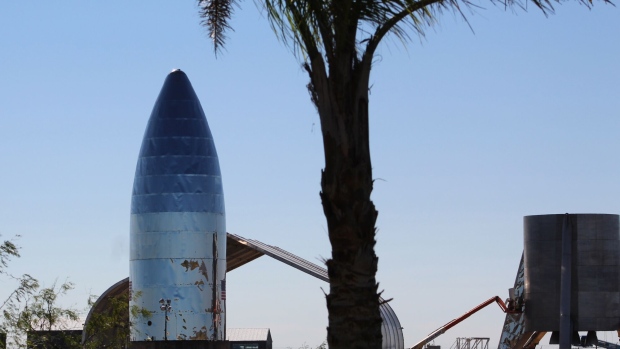Sep 18, 2023
SpaceX’s Starship Still Needs Wildlife Agency Review to Resume Launch
, Bloomberg News

(Bloomberg) -- US Fish and Wildlife officials have yet to begin a formal review of SpaceX’s upgrades following Starship’s April explosion, which could push back the next launch window for Elon Musk’s space company by months.
The agency still needs to review SpaceX’s plans to operate a water deluge system during the next launch of its Starship rocket — a process that could take anywhere from 30 to 135 days, the FWS said in an email to Bloomberg News on Monday.
However, that review process has yet to formally begin, the FWS said, which could further delay SpaceX’s plans to launch Starship on its second test flight from South Texas. The US Federal Aviation Administration cannot give SpaceX a new launch license until the consultation with the FWS is complete, the FWS added.
The FWS said it doesn’t have all the information it needs from the FAA to update its original opinion about how SpaceX’s launch facility, called Starbase, will impact endangered species and critical habitats surrounding the site — what’s known as a biological assessment.
“Once the Service reviews FAA’s final biological assessment and deems it complete, consultation will be re-initiated and we will have 135 days to issue a final biological assessment,” Aubry Buzek, a Fish and Wildlife Service public affairs specialist, said in an email Monday.
“At any time FAA and the Service can agree to extend that time if for some reason we need to gather further information or new information is presented,” Buzek said.
A SpaceX representative did not immediately respond to a request for comment.
The FAA grounded the rocket, central to Musk’s ambitions to carry humans to the moon and Mars, in the wake of the company’s first test flight on April 20. During that flight, Starship successfully took off from its Texas launchpad, but suffered multiple engine failures as it ascended into the sky. The two-stage rocket then failed to separate as planned and started spinning out of control, prompting SpaceX to intentionally blow up the vehicle.
The launch damaged SpaceX’s launchpad and spread debris and pulverized concrete across hundreds of acres of terrain.
Read More: SpaceX Rocket Blast Left US Officials in Disbelief Over Damage
As part of its efforts to re-license Starship, the FAA requested consultation with the FWS under the Endangered Species Act on August 11, the FWS said.
One of the primary reasons for the request revolved around SpaceX’s addition of a water deluge system placed underneath the company’s launchpad. After the first test launch of Starship resulted in extensive damage of the launchpad and surrounding area, SpaceX added steel plates underneath the rocket’s launch mount that release large quantities of water. The deluge system is meant to dampen and redirect the intense forces created by Starship’s engines at takeoff.
The FAA said in a statement it had submitted a draft update of the biological assessment to FWS and requested consultation under the Endangered Species Act.
Separate from this consultation, the FAA still needs to review a list of corrective actions that SpaceX must make ahead of its next test flight, designed to prevent the large amount of damage that the first test flight caused on April 20. The FAA aims to wrap up this review by the end of October, the agency’s acting administrator said on Wednesday.
Musk, SpaceX’s Chief Executive Officer, congratulated employees on completing necessary corrective actions prescribed by the FAA in a Sept. 10 post on his X social media platform.
©2023 Bloomberg L.P.

